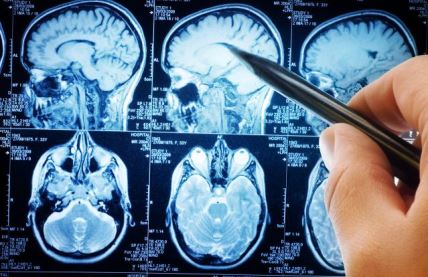Study: Structural brain differences due to childhood poverty may account for 20% of the academic achievement gap
.
Brain scans reveal how poverty hurts children’s brains (Bloomberg):
“Growing up poor has long been linked to lower academic test scores. And there’s now mounting evidence that it’s partly because kids can suffer real physical consequences from low family incomes, including brains that are less equipped to learn.
An analysis of hundreds of magnetic resonance imaging (MRI) brain scans found that children from poor households had smaller amounts of gray matter in areas of the brain responsible for functions needed for learning, according to a new study published on Monday in JAMA Pediatrics. The anatomical difference could explain as much as 20 percent of the gap in test scores between kids growing up in poverty and their more affluent peers, according to the research…
Children in households below the federal poverty level-an annual income of about $24,000 for a family of four-had gray matter volumes 7 percent to 10 percent lower than what would be expected for normal development. About 20 percent of American children lived at this income level in 2013, according to Census data…
Gabrieli cautions that the differences in development don’t mean poorer students can’t catch up in the right circumstances. “We have so much very strong evidence that there’s lots of room for brain plasticity all the way through adulthood,” he says.
Study: Association of Child Poverty, Brain Development, and Academic Achievement (JAMA Pediatrics). From the abstract:
- Importance: Children living in poverty generally perform poorly in school, with markedly lower standardized test scores and lower educational attainment. The longer children live in poverty, the greater their academic deficits. These patterns persist to adulthood, contributing to lifetime-reduced occupational attainment.
- Objective: To determine whether atypical patterns of structural brain development mediate the relationship between household poverty and impaired academic performance.
- Main Outcomes and Measures: Children’s scores on cognitive and academic achievement assessments and brain tissue, including gray matter of the total brain, frontal lobe, temporal lobe, and hippocampus.
- Results: Poverty is tied to structural differences in several areas of the brain associated with school readiness skills, with the largest influence observed among children from the poorest households.…As much as 20% of the gap in test scores could be explained by maturational lags in the frontal and temporal lobes.
- Conclusions and Relevance: The influence of poverty on children’s learning and achievement is mediated by structural brain development. To avoid long-term costs of impaired academic functioning, households below 150% of the federal poverty level should be targeted for additional resources aimed at remediating early childhood environments.
To learn more:




Heartbreaking. And, here in UK, there is still resistance to the ‘Living Wage’. Most employers are guided by the ‘Minimum Wage’ which is a lot less. Poor, poor kids — not to mention the knock-on for their eventual children.